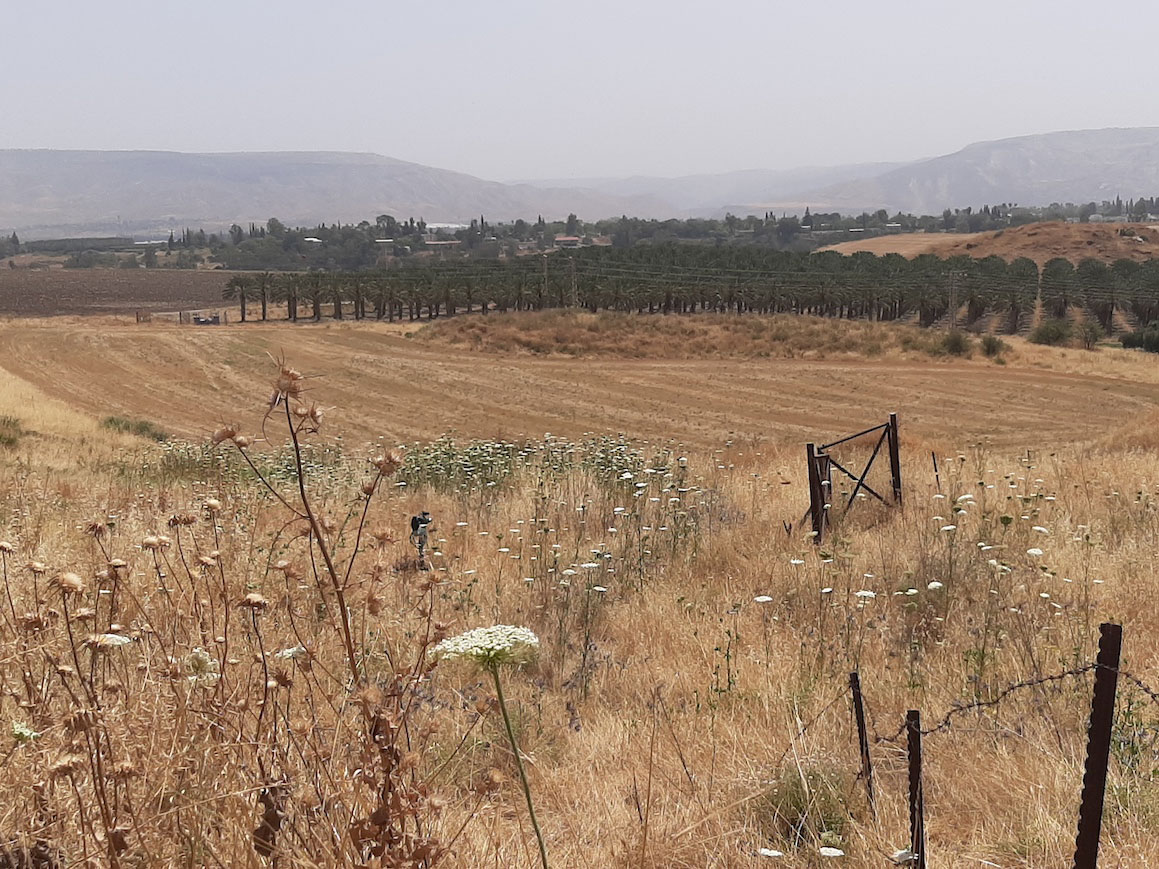What Drove Homo Erectus Out of Africa? [View all]
Excavations at a site in northern Israel are at the heart of a debate about the species’ migrations
Josie Glausiusz, Sapiens
October 19, 2021

The 'Ubeidiya site today is an expanse of grasses. Concealed from this view are slabs of fossilized pebbly clay, a source of ancient finds that have helped scholars learn about the journeys of Homo erectus. Josie Glausiusz
On a searing hot summer day at ‘Ubeidiya, an ancient site in northern Israel, an undulating expanse of dry grasses and thistles stretches into the distance. Far on the horizon, the mountains of Jordan shimmer through the haze; nearby stand cultivated olive groves and a date palm plantation.
Just south of the Sea of Galilee, and up a rocky dirt road, ‘Ubeidiya seems like a secret, with no sign to indicate its archaeological riches. About 1.5 million years ago, ‘Ubeidiya’s panorama would have looked dramatically different, says archaeologist Omry Barzilai, of the Israel Antiquities Authority, as he tramps through hillside brambles. “You would have seen a large lake that extends all the way to the Jordanian hills,” he says.
Hippopotami would have grazed on aquatic plants. The landscape was thickly wooded by wild oak, olive, and pistachio trees. And on the lakeshore, one might have glimpsed some of modern human’s relatives, a band of Homo erectus, using sharpened stone hand axes to rip up the carcass of a deer or hippo slaughtered by a saber-toothed tiger.
‘Ubeidiya is one of the earliest-known sites settled by H. erectus (sometimes called Homo ergaster) en route out of Africa. The ancient site—named after a nearby Palestinian Arab village and discovered in 1959 by members of a local farming collective, Kibbutz Afikim—may be key to understanding why H. erectus migrated from its place of origin.
More:
https://www.smithsonianmag.com/science-nature/what-drove-homo-erectus-out-of-africa-180978881/
